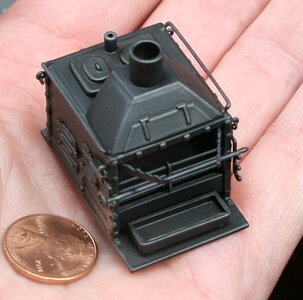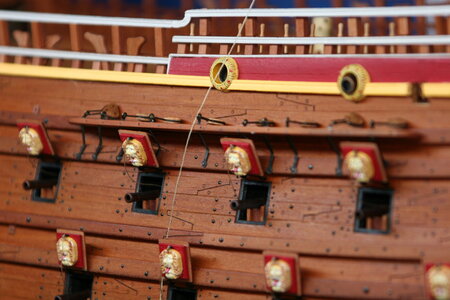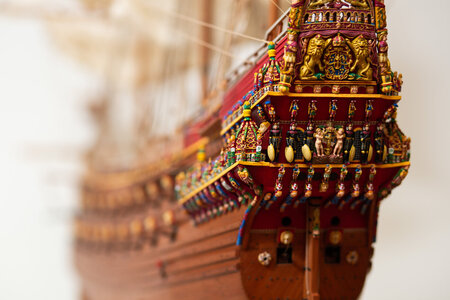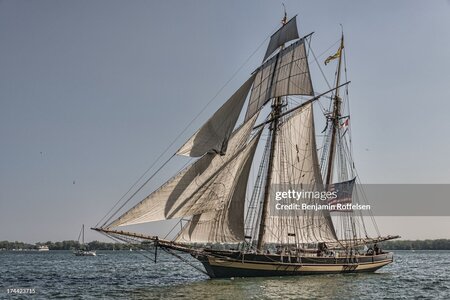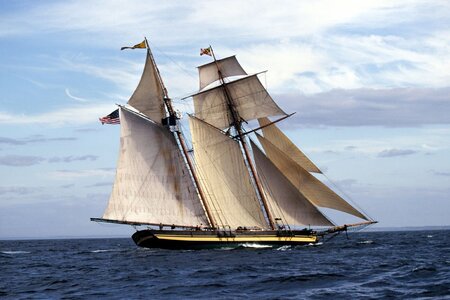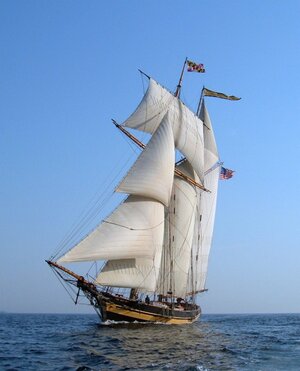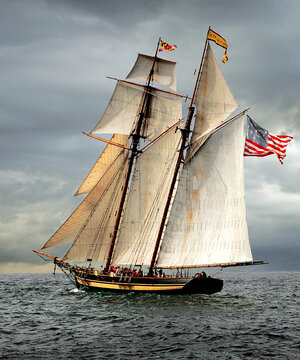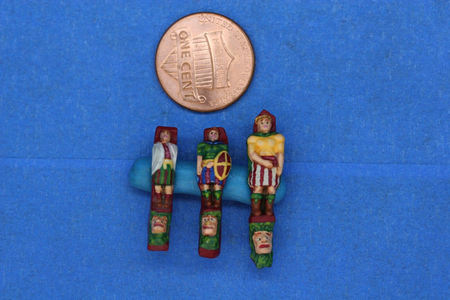Great. Now that we have a better idea of the scope of your project I think others will weigh in...
The decision to paint the decking/masts/yards would be a personal preference...but, no, I would either stain them or leave them natural.
So the painting is basically limited to large surfaces. That's not something I have done a lot of but here are some best practices...
1. Since you asked about type of brush, I assume you don't have an airbrush. That's probably the best solution but I certainly wouldn't purchase one just for a one-off build (though you did mention making a plastic ship next and plastics guys use airbrushes all the time).
2. I would recommend acrylic paint not oil-based paint (I just annoyed a bunch of guys).
3. I would spend an eternity getting the very best wood base I possibly could - this means filling cracks and sanding the hull smooth (leaving some of the planking visible gives a nice result but on a scale model this is often overdone in my opinion).
4. I would prime with a wood primer and then evaluate the surface and go back and fill gaps and voids and re-sand until you are satisfied.
5. Rather than a thick coat of paint I would use multiple thin coats. Acrylic paint is easily thinned with water. You might even want to sand or steel-wool between coats. I can't imagine getting a good surface with less than 3 very thin coats. Just use a soft flat brush (sable brushes are nice) - if your paint is thin enough brush strokes will be essentially nonexistent.
6. Don't forget a finish coat of your preferred finish. I would go with matte or satin poly or something similar.
My specialty is really in painting the very finest of details so hopefully others will offer suggestions or corrections to what I have shared here.
Be sure to start a build log!
PS: Here's a particularly nice painted hull (begins here and continues):
It’s been a while since I last worked on my ship model and I’m now glad to be back. Hoping to accomplish much before the summer weather arrives. I recently completed installation of the upper and lower Wales, and some exterior hull details.
shipsofscale.com
There are others but this one popped into my head.




 and I'm eager to give you the best help I can.
and I'm eager to give you the best help I can.